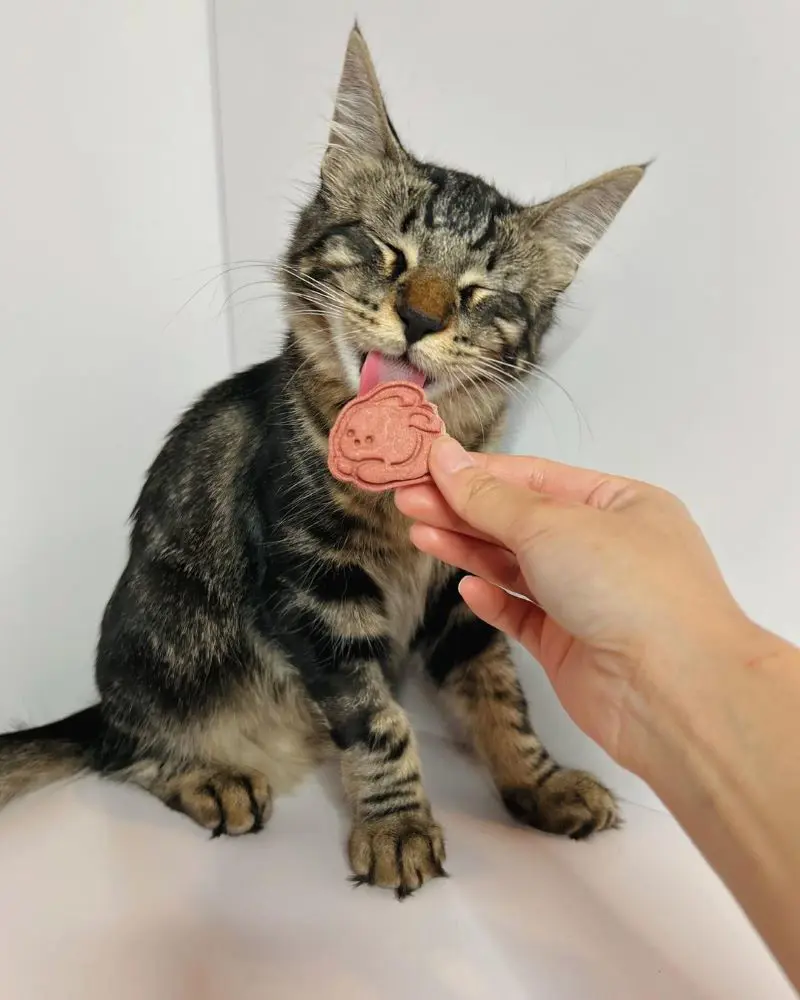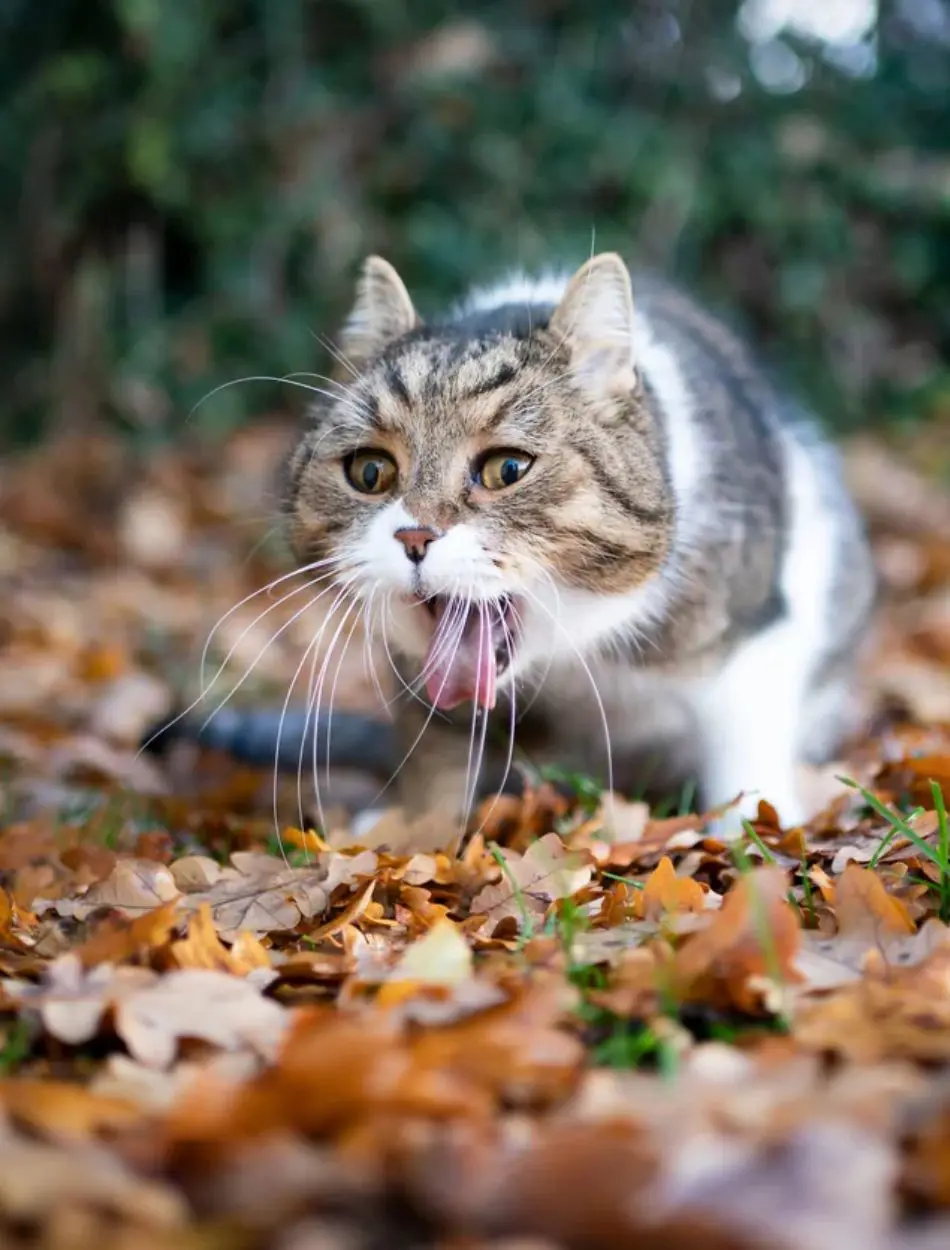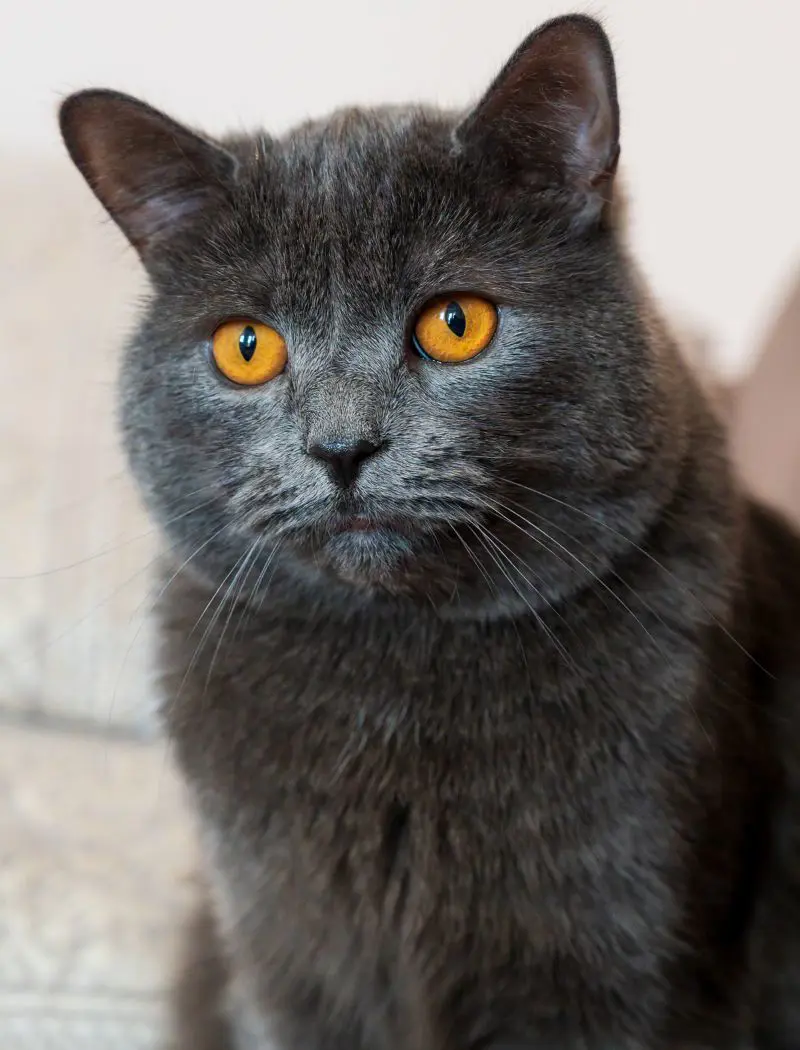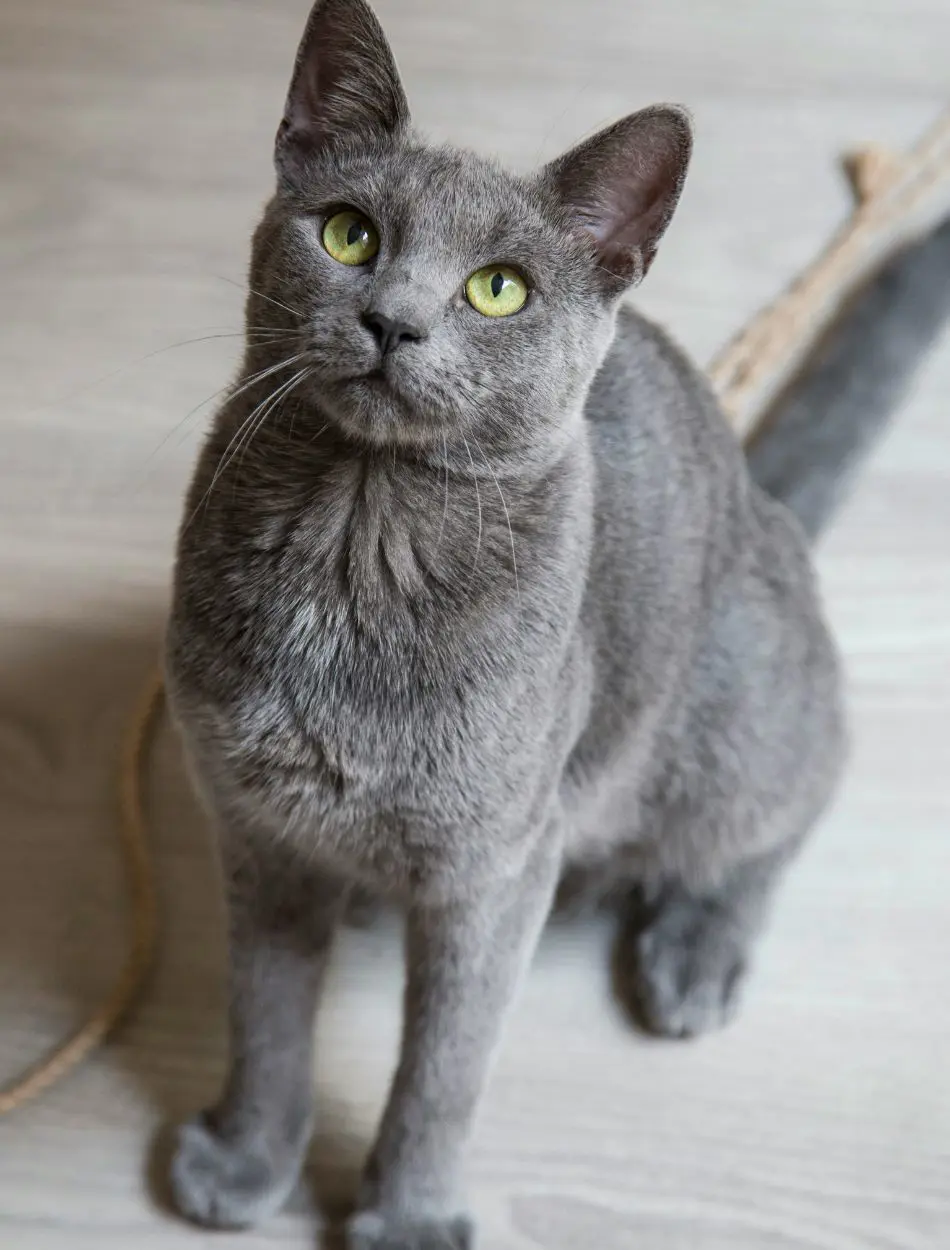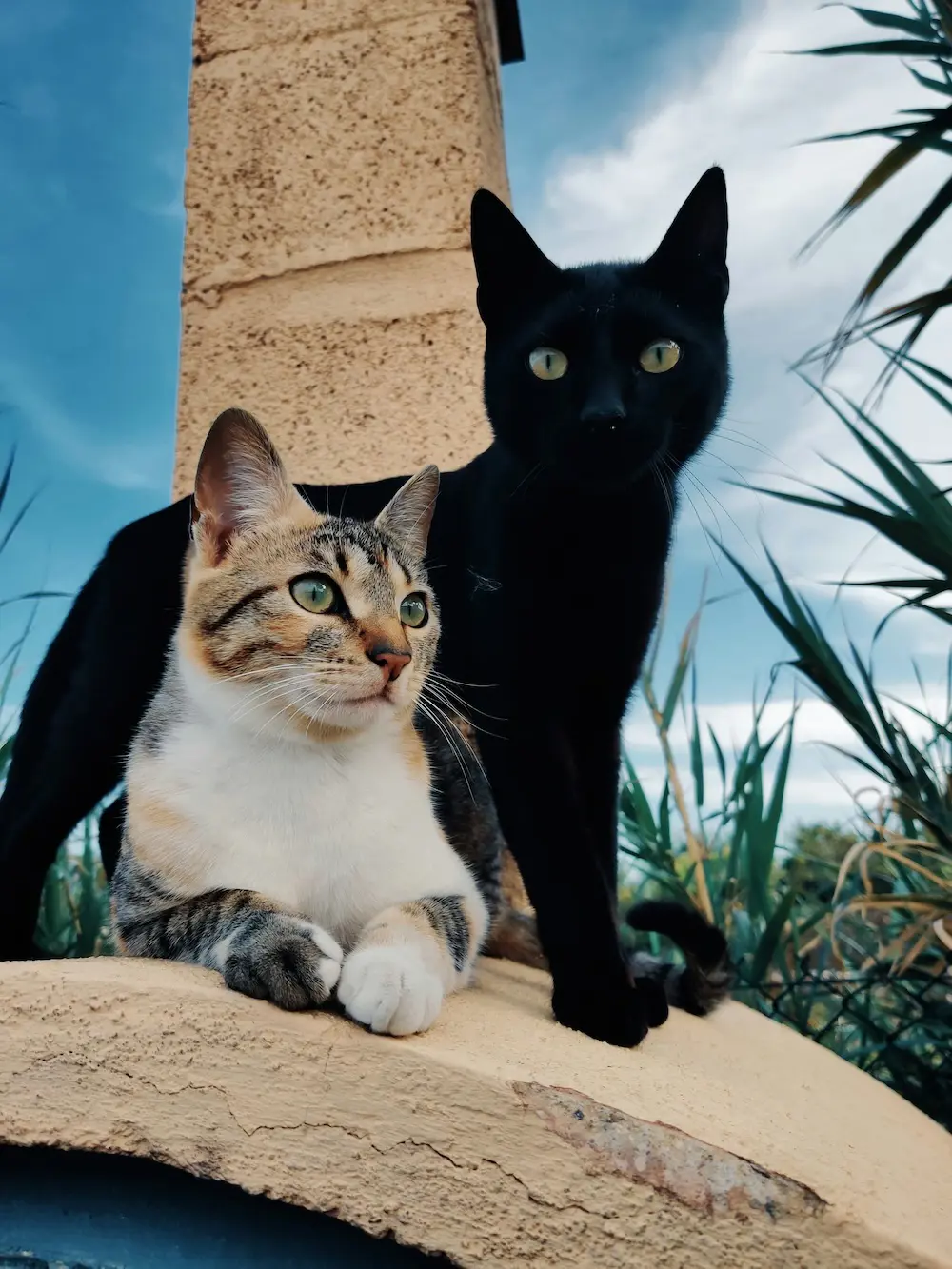18 Causes Of Aggression In Cats
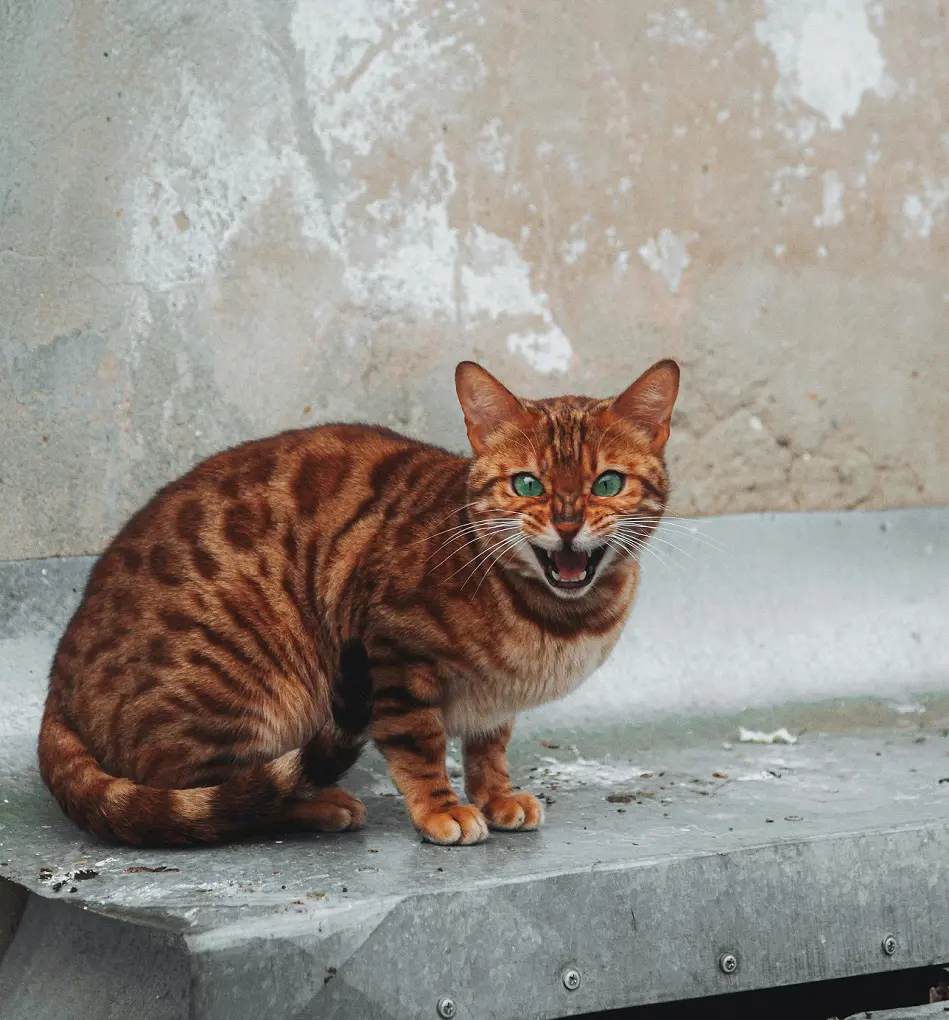
Cats showing aggression is a very common behavior that can be difficult for humans to understand. Unlike humans or other big animals, these small animals' aggressiveness is basically a defensive behavior as defending themselves is part of their instincts.
It is not easy to understand cats because of their complex communication since they use many different ways to interact like body language, vocal cues, physical contact, etc.
Cats are also very good pretenders, they act like they are angry or aggressive but in reality, they are actually scared or stressed. Hence, knowing these things will help their owners act better according to the cat's behavior.
1. Fear
One of the main causes of aggression in cats is fear as they have a high sense of self-preservation because they are naturally prey animals. Cats may become aggressive as a defensive tool when they perceive threats, such as strangers, other animals, or unfamiliar situations.
Aggression brought on by fear can take many different forms, such as growling, swatting, biting, or hissing. It is important to understand that these behaviors are a symptom of underlying insecurity and worry rather than being malicious.
Comprehending this vital aspect of feline behavior is critical for properly handling and soothing aggressive behaviors.
2. Territorial Disputes
Cats are naturally territorial beings with a strong inclination to protect their territory. When a cat feels threatened, they may act aggressively toward its territory, which may include its local living area, outdoor spaces, or even individual items in their surroundings.
A variety of aggressive behaviors, such as hissing, growling, swatting, and in extreme situations, physical attacks, are examples of this defensive behavior.
Territorial aggressiveness is frequently triggered by the presence of outdoor cats intruding on the cat's perceived domain, changes in the environment, or the introduction of new animals or people into the cat's area.
3. Lack of Socialization

Less or no socializing in the early stages of a kitten's development can play a major role in the adult development of aggressive habits as they will lack emotional attachment. The process of exposing kittens to a range of stimuli, such as people, other animals, settings, and items, is known as socialization.
This exposure helps them become more socially adept, less afraid, and more adaptive. On the other hand, cats who aren't exposed to certain situations or people may grow afraid or acquire phobias, which can lead to aggressive behavior.
These cats struggle to establish healthy social relationships because they frequently display excessive fear, avoidance, or defensive tendencies. For these people, specific behavioral modification programs may be necessary to treat underlying fears and encourage acceptable social relationships.
4. Pain or Illness
In cats, aggression may be a symptom of an underlying sickness or pain. A cat may act aggressively to communicate their discomfort when they are suffering from a medical illness, such as arthritis, dental problems, or other.
These actions can take the form of little annoyance or serious biting or scratching. Infections, hormone abnormalities, and neurological conditions can further exacerbate aggressive tendencies, so, it is important to understand that aggressive behavior may indicate an underlying medical issue.
Consequently, to precisely identify and address the underlying cause of the issue, a thorough vet examination is necessary. To manage pain and disease, decrease the chance of aggressive behaviors, and enhance the overall quality of life for cats, early intervention is essential.
5. Maternal Instincts
One common behavioral expression that female cats display during and right after giving birth is maternal hostility. The primary motivation for this instinctive reaction is a strong protective impulse to keep her children in a safe place.
When a female cat perceives threats to her kittens, she may become more aggressive, defensive, and territorial, exhibiting traits known as the queen. The young's survival depends on this protective instinct since it keeps possible predators away and keeps the kittens safe.
It is important to realize that this aggressiveness is a normal and passing phase rather than something cruel. The queen usually loses her protective instincts and her hostility as the kittens get older and self dependent.
6. Redirected Aggression
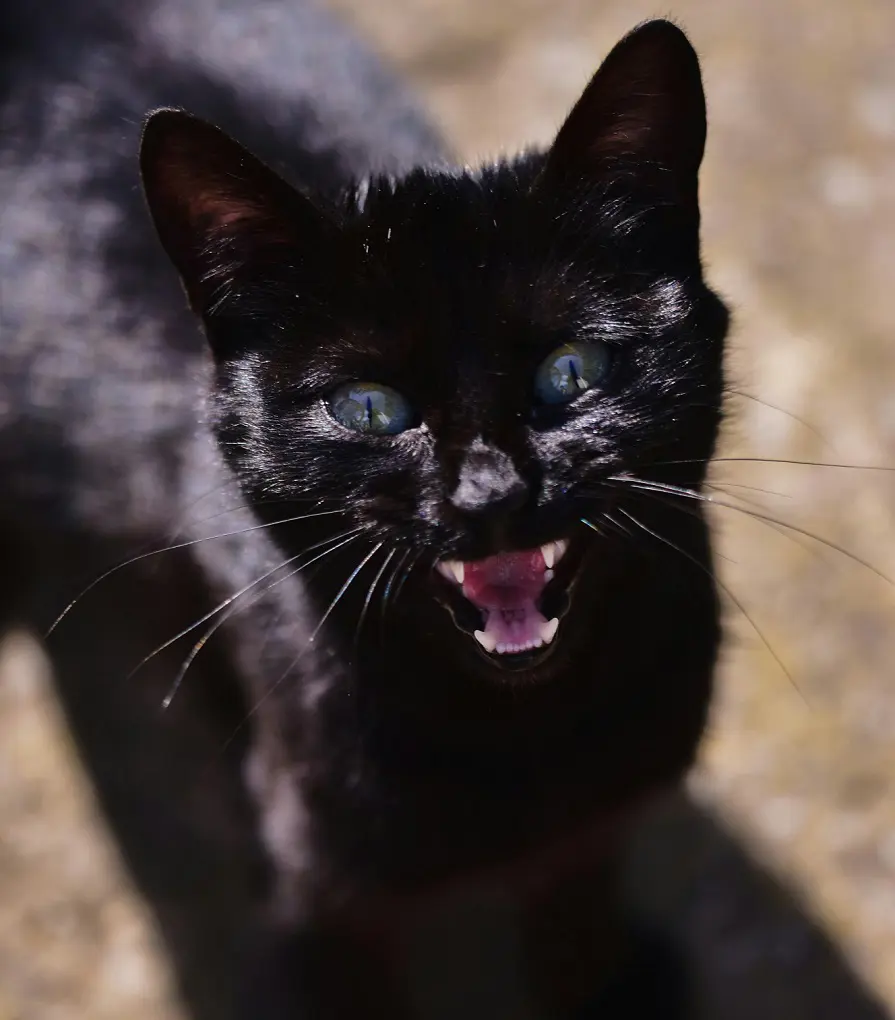
Cats have a complex behavioral phenomenon known as redirected aggression, in which they redirect their irritation or arousal from one stimulus to another, typically a less harmful target. Usually, a cat will exhibit this behavior when it is unable to deal with the main cause of its irritation.
For example, a cat might be aroused by outside stimuli, like a dog barking outside, but physical obstacles or constraints prevent it from getting to it or from confronting it. As a result, the cat might release its stored anger or excitement on a human relative or another domestic animal that is easier to reach.
Owners may get confused and distressed as a result of this transference of aggressiveness, which frequently happens without the secondary target appearing to provoke it.
7. Predatory Instincts
A primary behavioral inducer, predatory instincts are engrained in the feline psyche. Because they are predators by nature, cats have an innate tendency to stalk, pursue, and leap at their prey.
These natural tendencies still exist even though domestication has lessened the necessity for hunting survival. Playful aggression is a result of these predatory instincts and is frequently shown through biting, scratching, and pouncing.
However, these actions have the potential to escalate into problematic hostility when they become excessive or misguided.
8. Resource Guarding
Cats that exhibit resource guarding, which is a typical behavioral problem, express angry displays or actions toward people who try to take or access particular resources. These resources can include a wide range of things, such as food, bedding, toys, and even human interaction.
When a cat feels that they are not the rightful owner of an object, it may growl, hiss, swat, or bite. These are examples of resource-guarding behaviors. Since resources are necessary for comfort and sustenance, this conduct is frequently the result of a perceived danger to their survival or well-being.
Although cats naturally preserve their belongings, extreme resource guarding can cause problems in homes with multiple cats or when these valuables are involved in relationships with people.
9. Frustration
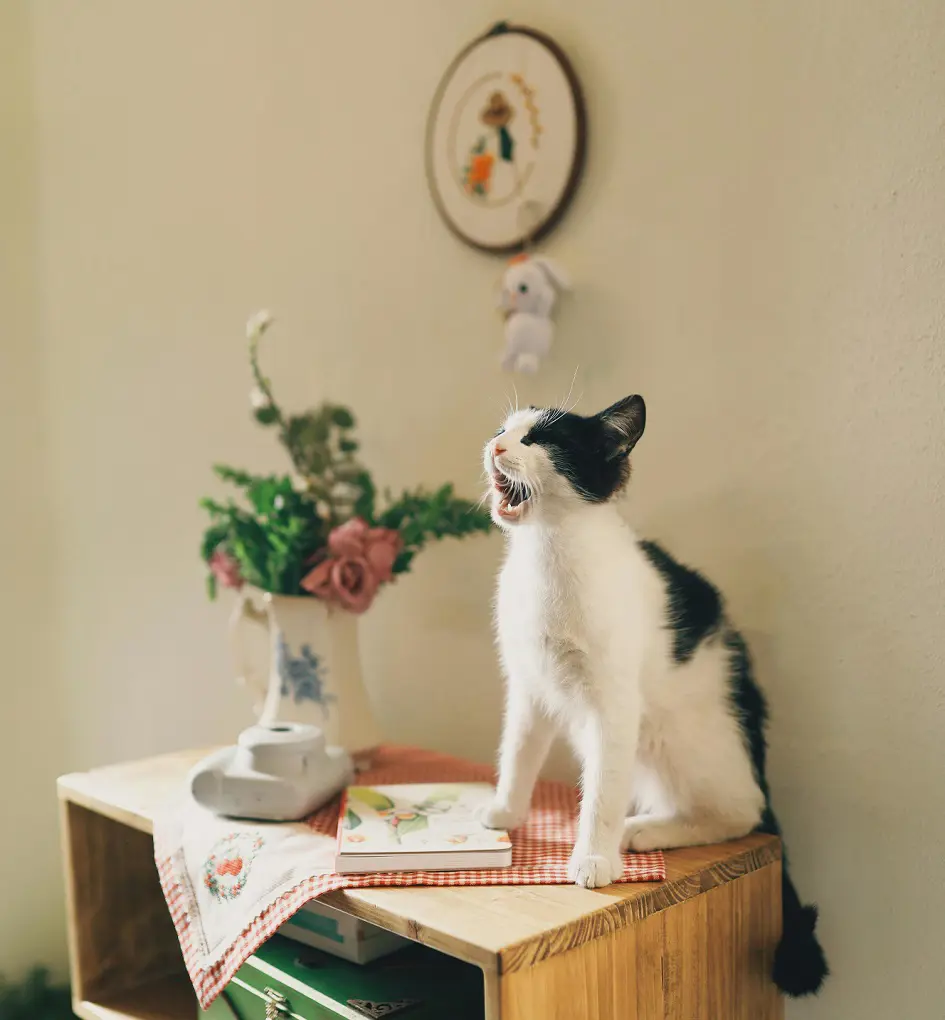
In cats, frustration frequently precedes violent or aggressive behavior. Frustration can fester in a cat when it cannot get what it wants or satisfy a basic need, which might result in an aggressive reaction.
This can show up in some ways, like play-induced aggression, which is the result of the cat being overstimulated during play and acting aggressively, or misdirected aggression, in which the cat targets an unexpected target with its fury. Feline frustration is often influenced by environmental variables.
Boredom and frustration can result from confinement, inadequate enrichment, and a lack of physical and mental stimulation. Also, when these resources are seen as threatened, cats may become possessive of food, toys, or particular spaces as a form of resource-guarding behavior.
10. Stress
In cats, stress is a common cause of aggressive behavior. Because they are predatory animals, cats are extremely sensitive to changes in their surroundings, and even small changes in their habitat can cause them great discomfort.
Various aggressive behaviors, including hissing, growling, biting, or swatting, are manifestations of this mental state. Among the most common stresses for domestic cats are changes in their environment, like relocating, remodeling, or welcoming new family members or pets.
Also, rivalry for resources and territorial issues can result in chronic stress in multi-cat families. Stress levels are also raised by inadequate hiding places, overcrowding, and a dearth of environmental enrichment. Apprehending that stress-induced aggressiveness is normally a defense mechanism rather than a hostile act is important.
11. Hormonal Changes
Feline aggression can be greatly influenced by changes in hormone levels. The main male sex hormone, testosterone, is frequently associated with more aggressive and demanding characteristics in male cats.
Males that are still intact may become more aggressive toward other cats, especially when mating season arrives and they are fighting for mates and territory. During their reproductive cycle, female cats undergo hormonal changes, and during estrus (heat) or the post-partum phase, there may be an increase in hostility.
It is important to note that while these hormonal elements may play a role in triggering aggressive inclinations, they are not the only ones. The expression of feline aggression is also significantly influenced by other elements, including personal personality traits, medical issues, and environmental stressors.
12. Overstimulation
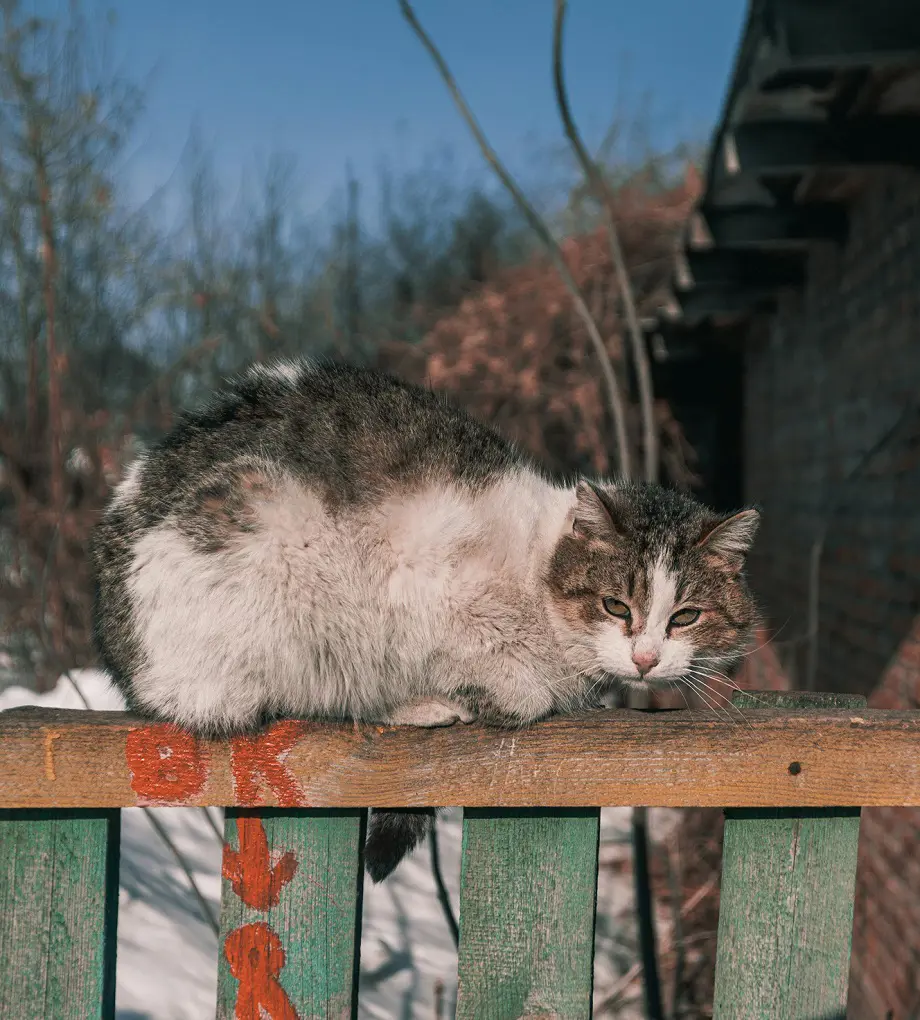
Overstimulation is most often the precursor to aggressive behavior in cats. It may sound counterintuitive, but playing or caressing too much can make cats more aroused. Physical signs of overstimulation include dilated pupils, flattened ears, and rigid body posture.
A cat that has reached its threshold for aggression may do so to protect itself or to stop the overpowering stimuli. To stop things from getting worse, it's important to notice the nonverbal signs that a cat gives when they're playing or being petted.
By being aware of this and valuing a cat's limits, owners can effectively control and avert overstimulating-related aggressiveness.
13. Genetic Predisposition
Aggression in cats can be strongly influenced by genetic variables, although it may not be the only factor, hereditary characteristics can make someone more likely to exhibit particular behavioral patterns. Certain breeds, like Siamese or Russian Blues, that have historically been inclined to hunt or guard, may have stronger predatory or territorial inclinations.
Also, temperament can be influenced by individual differences within a breed. Genetically determined neurological variations can impact a cat's emotional management, impulse control, and responsiveness to stimuli. It is important to remember that environment and genetics interact, and that intricate interactions between nature and nurture frequently result in the expression of aggressive behaviors.
Even though there is a genetic propensity, aggressive tendencies can be prevented from developing with proper socialization, training, and environmental enrichment.
14. Improper Handling
An important factor in cats' aggressive behavior is improper handling as they are naturally sensitive animals that have certain preferences when it comes to physical contact. When people disregard these desires, cats may become fearful, anxious, or even aggressive against humans.
Overly harsh handling, restraining the cat against its will, approaching from above, and breaching personal space without first making eye contact are common faults.
Because of these behaviors, the cat may start to associate with people negatively, viewing people as potential threats. Also, because cats find it difficult to comprehend human behavior, uneven handling might confuse them.
15. Hyperthyroidism
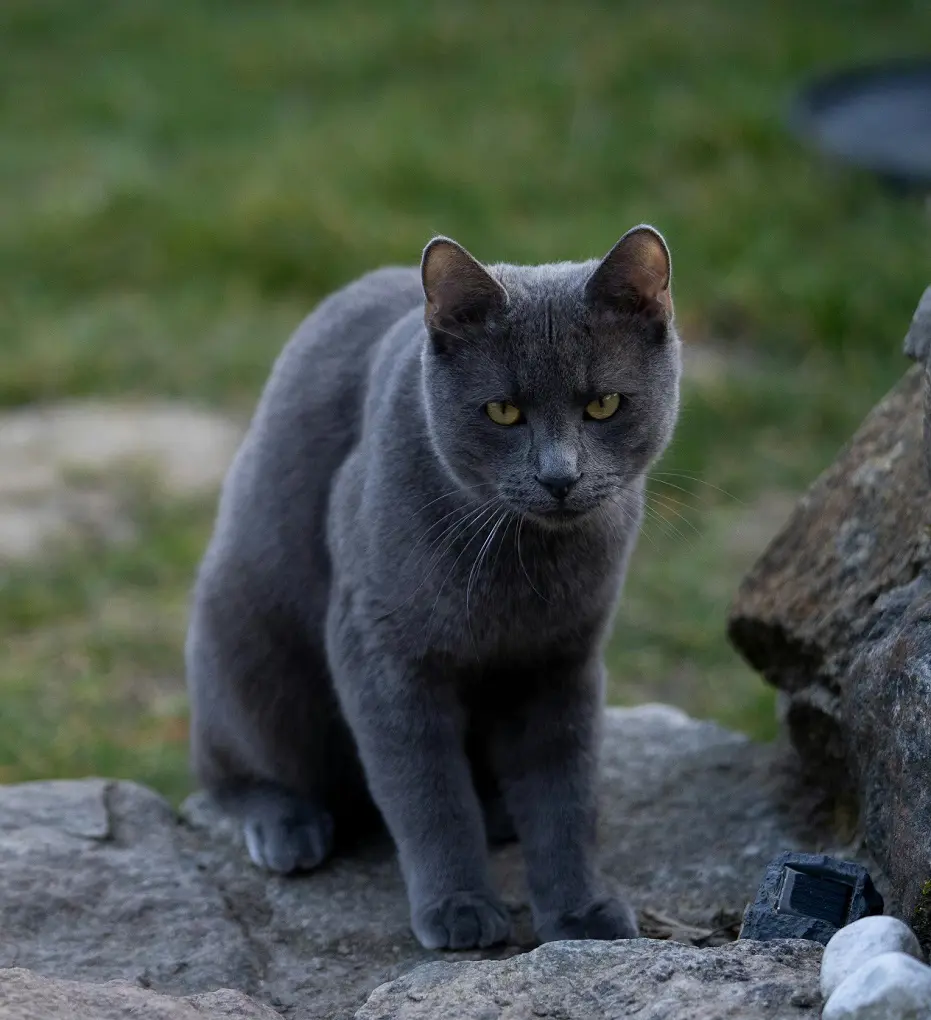
An overactive thyroid gland, or hyperthyroidism, may be a contributing factor in feline aggression. The disorder causes the thyroid to produce too many hormones, which speeds up metabolism, same is the case with humans.
Among the many symptoms that can be brought on by this hypermetabolic condition are heightened energy, restlessness, and irritability. Cats suffering from hyperthyroidism may thus display increased sensitivity and hostility towards their surroundings, including their human friends.
Also, the condition's associated physical discomfort, such as elevated heart rate, weight loss, and increased appetite, may exacerbate an already irritable state and lead to violent actions.
16. Conflict With Other Pets
Aggression between different species is a typical behavioral issue in homes with many pets. Due to their innate territorial nature, cats frequently view the arrival of a new animal as a danger to their territory.
This can show up as a variety of aggressive actions, including biting, chasing, swatting, and hissing. Tensions might get worse when there is competition for resources like food, water, or good places to relax.
Furthermore, miscommunication and hostility can result from variations in communication methods between dogs and cats, or even between cats. The age, sex, and personalities of the animals involved are among the many factors that greatly influence the dynamics of inter-pet relationships.
17. Noise Sensitivity
Aggressive behavior in cats can be significantly influenced by noise sensitivity. These animals have developed a keen sense of hearing to have a greater awareness of their surroundings. As a result, loud, unexpected noises might cause intense terror to them.
Cats may display a variety of defensive behaviors, including aggression, in response to such stimuli. This response is oftentimes misunderstood as animosity, yet it's actually an expression of insecurity and dread.
Noise-induced hostility is frequently triggered by thunderstorms, pyrotechnics, construction noise, and even everyday household noises like vacuum cleaners or even quarrels between house members.
18. Lack of Routine
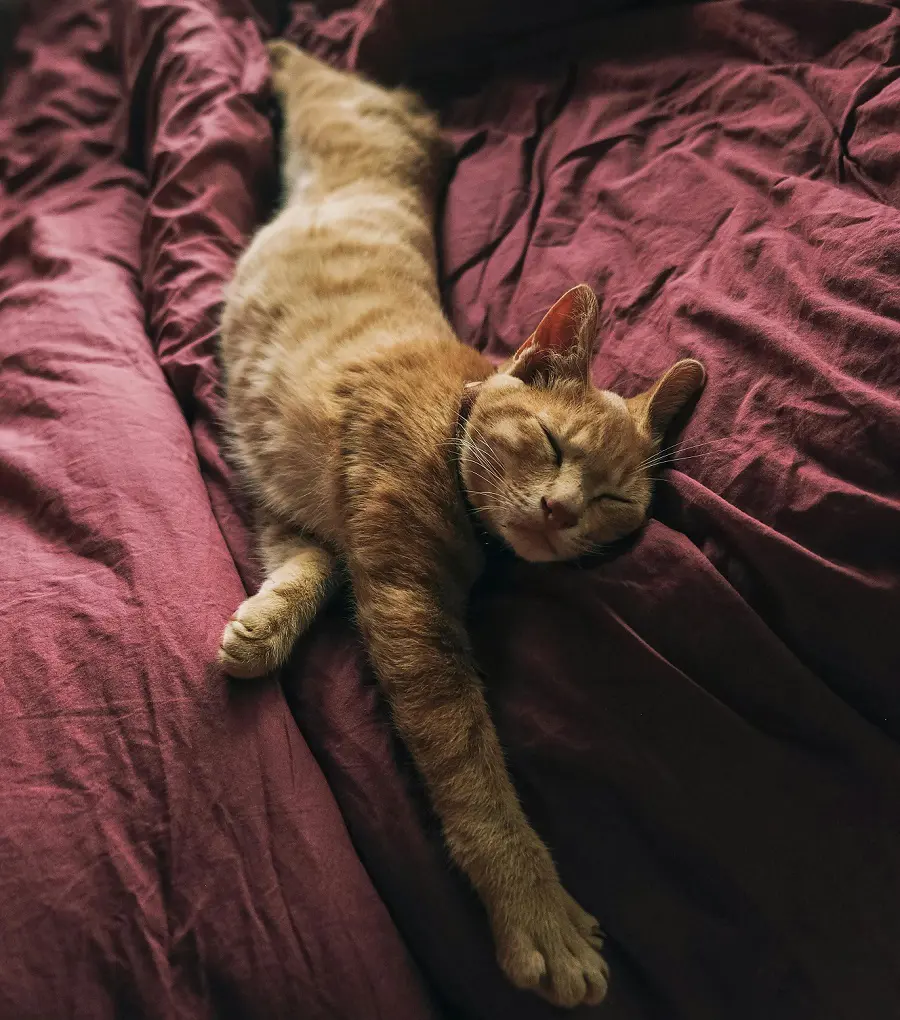
Since cats are creatures of habitual behavior, a steady schedule gives them a sense of stability and predictability. A change in their routine might cause tension, worry, and ultimately, hostility.
A cat's surroundings can become unstable due to sudden changes in feeding schedules, playtimes, or sleep schedules, which can result in protective or territorial behaviors. Also, erratic interpersonal interactions can worsen confusion and irritation, which can then lead to aggressive behavior.
Lack of routine can also make underlying behavioral problems worse because it takes away the security and familiarity that usually help to moderate these inclinations. Thus, encouraging a peaceful and harmonious coexistence between people and their feline pets requires creating and sticking to a regular daily routine.
Recent posts
Cats
How Much to Feed a Kitten: A Complete Chart, Schedule And Caring Guide
As cats are fast-growing, their nutrient requirement can change quickly, sometimes within a few days. Generally, a food schedule consisting of small amounts spread throughout the day is much better than feeding 2-3 large meals. If you are unaware of ...
Why Is My Cat Throwing Up? 16 Common Reasons
Your cat doesn't always give you a clue why their tummy is troubling them so much that it is hurling hairballs or something more serious. Why does your cat vomit? From simple dietary indiscretions to a myriad of other common and complex conditions, t...
A Step By Step Guide On How To Give A Cat A Pill
Since cats are regarded for their independence and generally tend to refuse to take medications, giving them a pill can be a tough attempt for many pet owners. This makes the process stressful for both the pet and the owner. This guide is supposed to...
18 Signs A Cat Is Dying
One of the most difficult things to witness as a pet owner is seeing your feline's degrading condition. They are known to hide their pain and discomfort during the end of their lives. It is important to know the signs a cat is dying to offer comfort ...
Cat Poop Color Chart: How To Tell If Your Cat's Poo is Healthy
Monitoring your cat’s poop can offer essential clues about their health. While it appears to be a messy chore, taking note of the color, texture, and consistency of your cat's stool can warn you of underlying health troubles. The cat poop color...
15 Hypoallergenic Cat Breeds
Fur shedding, while a routine part of a cat's hygiene, can be a source of irritation to their owners. Especially in people allergic to protein excreted by cats, this can be a serious problem. Despite pet parents' fascination with perfect hypoallergen...
